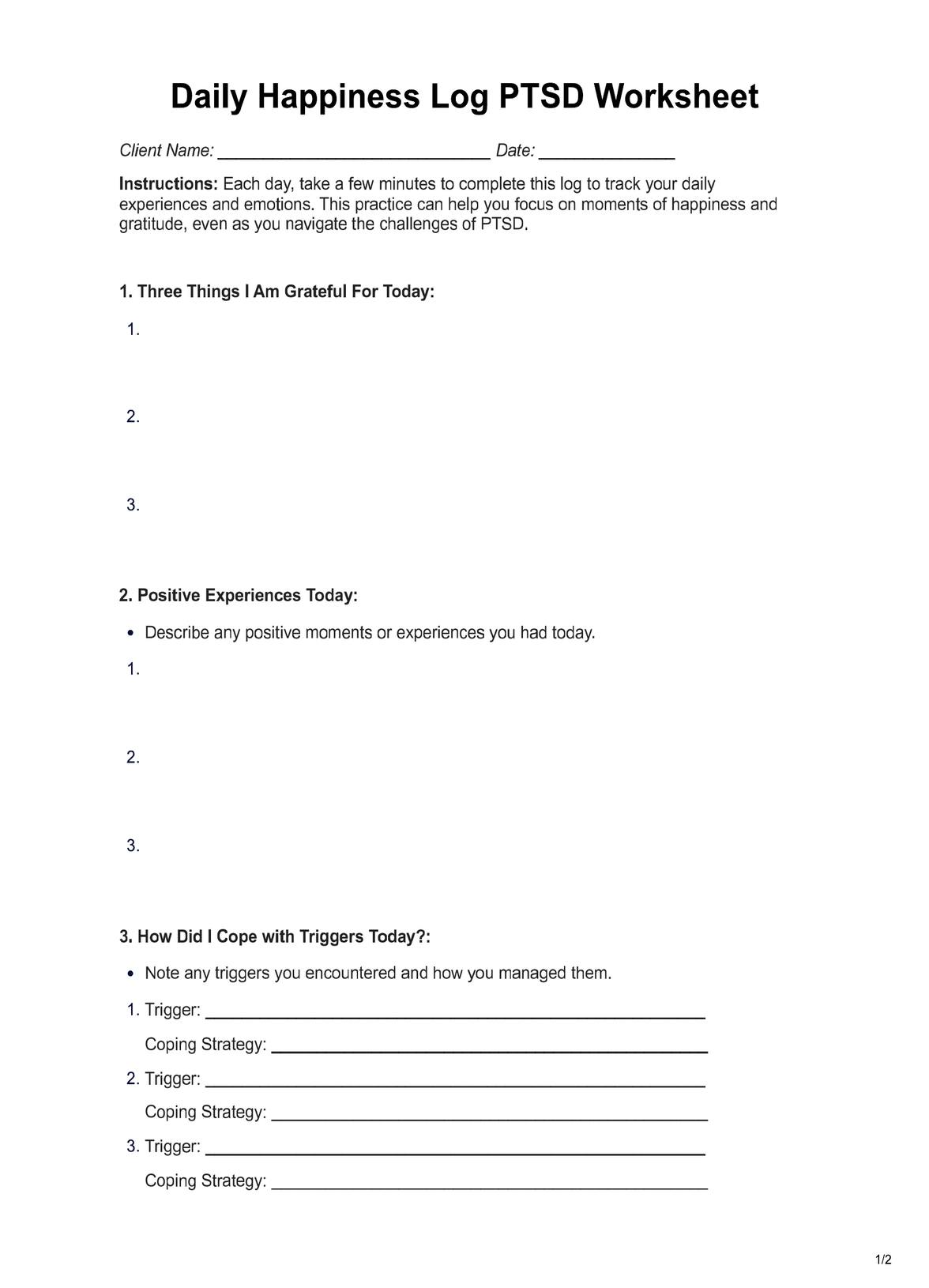This worksheet is particularly beneficial for individuals with PTSD, but it can be used by anyone looking to enhance their emotional well-being. It's commonly employed in therapy, and healthcare professionals may recommend it to their clients.

Track your progress with the Daily Happiness Log PTSD Worksheet, enhancing healthcare and well-being.
This worksheet is particularly beneficial for individuals with PTSD, but it can be used by anyone looking to enhance their emotional well-being. It's commonly employed in therapy, and healthcare professionals may recommend it to their clients.
It is recommended to complete this worksheet daily, ideally at the end of each day. Consistency in daily practice helps build a routine of focusing on positivity and gratitude, which can be especially helpful for those dealing with PTSD.
The worksheet typically includes sections for gratitude reflection, recording positive experiences, documenting triggers and coping strategies, rating daily mood, practicing self-compassion, planning for self-improvement, and providing additional space for notes or insights.
EHR and practice management software
*No credit card required
Free
$0/usd
Unlimited clients
Telehealth
1GB of storage
Client portal text
Automated billing and online payments